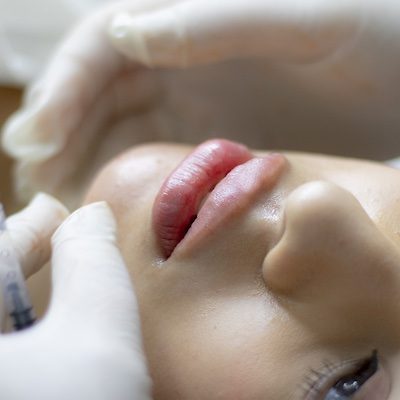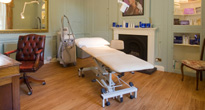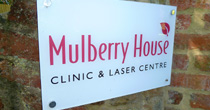
This can be attributed to various factors, including the influence of social media and celebrities, as well as a greater focus on self-care and aesthetics.
Studies have demonstrated that over the last few decades, there have been significant changes in lip aesthetics as portrayed in photographs in fashion magazines, with protrusion and lip curl both increasing. In Western culture, plump and well-defined lips are the preference with key characteristics:
- Good fullness/volume
- Symmetry between upper/lower lip
- Well defined border
Yet it is important to remember that lip enhancement is not mere prettification. In fact, there is real science behind achieving natural-looking, safe and successful treatment and it requires careful consideration and a skilled practitioner to fully understand the anatomy.
Lip Anatomy Explained:
The lips are a complex and beautiful part of the human anatomy. They are made up of several key components, each playing a vital role in their function and appearance:
- Skin:
The outermost layer of the lips transitions from the regular facial skin to the specialised lip skin at the vermilion border. This transition zone is important for maintaining a natural appearance and ensuring smooth integration of any fillers used for enhancement. - Vermilion Border:
This is the colourful, red part of the lips that we often associate with lipstick application. The vibrancy of the vermilion border is due to the presence of specialized blood vessels that are closer to the surface compared to the rest of the face. Understanding the vermilion border is crucial for lip enhancement procedures, as injections should be placed precisely within this border to avoid unnatural-looking bumps. - Mucosa:
The inner lining of the lips, the mucosa, is a different type of tissue compared to the outer skin. It is softer and more moist, allowing for comfortable lip function like speaking and eating. Knowing the difference between the mucosa and the vermilion border is essential for safe filler placement, as injections should never be made into the mucosa. - Orbicularis Oris Muscle:
This is the ring-shaped muscle surrounding the mouth that is responsible for all lip movements, such as pouting, smiling, and speaking. Precise injections around the orbicularis oris muscle can enhance lip definition and shape. - Blood Supply:
The lips have a rich blood supply network consisting of labial arteries and veins. Understanding this vascular network is important for choosing the right injection technique and minimizing the risk of complications like bleeding or bruising. - Teeth/Gums:
Providing structure that affects projection and rotation of the smile
Science Behind Lip Enhancement:
For those looking for a quick, cheap and temporary boost to their lips, the market for plumping gloss provides an option for subtly boosting the lips.
However, fillers are the generally considered to be a better method for lip enhancement. They are essentially injectable substances that add volume and definition to the lips. Hyaluronic acid (HA) is the most popular and safest type of filler used for lip enhancement. HA is a naturally occurring substance found throughout the body, including the lips. It plays a key role in hydration, adding plumpness and structure to the skin. When injected into the lips, HA fillers attract water molecules, which helps to increase volume and improve hydration. This results in fuller, plumper lips that look and feel more youthful. Additionally, different types of HA fillers are now available to help practitioners achieve different results. For instance, softer fillers can be used for subtle lip enhancement, while firmer fillers can be used for more dramatic lip definition.
Areas to consider include:
- Natural thickness of lip tissue
- Contours/shaping
- Protrusion/inclination
- Muscle tone and dynamics
Benefits of Understanding Anatomy:
A medically qualified practitioner possesses in-depth knowledge of these structures and how they interact. This allows for:
- Targeted Injections: Precise placement of fillers in specific areas to achieve desired outcomes. For example, enhancing the cupid’s bow or adding volume to the lip borders.
Understanding lip anatomy is crucial for achieving natural-looking lip enhancement with several key benefits. Injections can be targeted to specific areas of the lips to achieve the desired outcome. For instance, fillers can be strategically placed to enhance the cupid’s bow, the indented area above the centre of the upper lip, creating a more defined and attractive appearance. Likewise, injections can be used to add volume to the lip borders, creating a sharper and fuller lip line. - Avoiding Complications: Knowledge of delicate structures like blood vessels and nerves minimises the risk of bruising, bleeding, and even nerve injury.
Understanding lip anatomy is not just about sculpting an aesthetic result. It also helps to minimise the risk of complications associated with lip enhancement procedures. Precise injection techniques that target specific areas and avoid delicate structures like blood vessels and nerves can significantly reduce the risk of bruising, bleeding, and even nerve injury. - Natural-Looking Results: Understanding different lip layers ensures filler placement within the appropriate tissue for optimal results and a smooth, natural look. Additionally, knowing the different layers of the lips ensures that fillers are placed within the appropriate tissue for optimal results and longevity. By injecting fillers within the deeper tissues of the lips, practitioners can create a smoother, more natural look that avoids bumps or irregularities on the lip surface.
A skilled practitioner can use their knowledge of anatomy to avoid overfilling certain areas that could lead to an unnatural or even comical look. For a flattering result, it is important to consider the lips not in isolation, but within the overall balance of the face. Focusing solely on the lips can lead to exaggerated results. This is vital to a natural and balanced result.
More information
Mulberry House Clinic
Established 2003
Mulberry House Clinic has an excellent reputation in the Northampton area as an independent, doctor-led practice with over 19 years experience. Dr John Tanqueray is a former GP who can assess and diagnose skin conditions from a medical perspective before suggesting the most appropriate treatments.
A private consultation is the starting point for all patients in order to facilitate a full discussion about the desired results as well as detailed facial and skin assessment. Find out more about first consultation.
For further information or to arrange a confidential consultation, please complete our contact form, call 01604 702630 or email: info@mulberryhouseclinic.co.uk.






